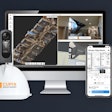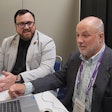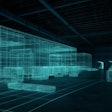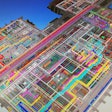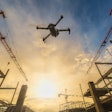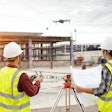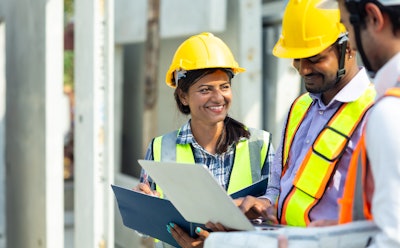
According to Chad Lucks, a Quality Control Manager for US Engineering (a MEP contractor with a footprint across the Midwest), photogrammetry, Lidar and AI have improved site documentation and reduced travel time for the company. The process of manual photo documentation is sometimes unreliable and inconsistent, and Lucks would find himself spending hours picking through boxes of photos. With the goal to mitigate risk on projects spread throughout Colorado, Arizona, and North Dakota, they switched to OpenSpace and used robust photo documentation to save thousands in rework and as much as 10 hours per week in travel.
Multi-discipline specialty contractors need to solve complex problems at speed, and technologies that do not just digitize old processes but enable things to be done in new ways are in demand.
That is why software applications that combine photogrammetry with machine vision and even artificial intelligence are gaining ground rapidly among contractors like US Engineering a multi-location Kansas City, Mo.-based plumbing, piping, HVAC, and sheet metal construction, service and maintenance. The company works in demanding and mission-critical sectors including science and technology, healthcare, government, commercial, correctional, educational, and manufacturing.
The company, which has locations in the Rocky Mountain and Midwest regions and has been using OpenSpace Capture on projects since 2021. That is when they began exploring various solutions not only to mitigate risk from in-person site visits during the COVID-19 pandemic, but to streamline photo documentation of projects and eliminate manual processes.
The OpenSpace photogrammetry solution also helped Lucks and his associates avoid traveling between different locations, saving time and money.
“As Quality Control Manager you would go around to several projects, making sure things are being installed as they should be, handle inspections ready for commissioning,” Lucks said. “A lot of our work is repeat customers wo like how we performed on the project, ideas we can bring to the projects.”
While the pandemic was one of the inducements for the company to start researching photogrammetry solutions, the utility of the solution, which pairs helmet-mounded 360-degree cameras with a machine vision and AI solution that stitches images together and adds project context, has far outlasted the crisis.
“We were looking around for software to help tell the story of the project, help protect our interests, while looking at projects remotely,” Lucks said. “We tried a couple different software products but stayed with OpenSpace. It is really easy to set up, and really easy to use. It is deployed currently on almost 30 projects in Col., Mo., Ark. And ND.”
Over and above process efficiencies, the time and fuel savings resulting from standardizing on OpenSpace have been significant.
“Timewise, a project could be couple hours away—that’s four hours a day wasted in the car,” Lucks said. “Going to that project adds up throughout the week. One project was two and a half hours from my house, and I would be there two to three days per week. I am the only person in my role for the Rocky Mountain region, and there is one more in Midwest. With OpenSpace, we can open the solution to project managers and superintendents who are the ones doing the field walk.”
Dispute Resolution
Apart from supporting US Engineering’s internal business and project management processes, OpenSpace has helped the company document its work to stakeholders.
“One of the problems that always happens in construction is the GC saying you are behind schedule,” Lucks said. “Now with us being able to do the video walks, we can compare to actual CPM (critical path method) schedule—and finding out we are not the ones behind.”
The solution then enables a construction team to move onto and resolve the real issue behind delays.
“Weather, design and the other typical construction stuff that comes up can all cause delays,” Lucks said. “For a lot of trades, getting the supplies has really become an impact. I heard the other day—flex ducts, depending on which vendor, may involve a five- to six-month 5-6 lead time. On one project now, the schedule shows we were supposed to be installing register diffusers—but the wires were not even installed for the ceiling grid. It’s hard to install with no ceiling grid.”
AI Construction Progress Reporting
US Engineering was an early adopter of OpenSpace ClearSight, which since has been rebranded as Openspace Track. This module enables contractors to track and validate percent complete, quantity installed and rate of work.
“For progress reporting, we are using it for sheet metal on projects,” Lucks said. “It seems to work really well. A project manager can look and quickly say what is and is not at behind schedule. We can expose this data to owner and general, but we also use it to track labor production and where we can start shifting workers around. On a lot of projects, we highlight what is and is not installed.”
Anyone can update the projects now from
OpenSpace Tips and Tricks
No technology is a magic button, and each construction software product will involve some type of learning curve. With OpenSpace, users need to learn how to walk the site correctly.
“When I am describing to people how fast to walk, pretend you are walking your son or daughter through the toy section at Target—stop at every toy,” Lucks said. “It is also really hard, but keep your head still, don’t look up and down—the camera looks up and down for you.”
The camera also makes a difference, and 360 cameras are not equal.
“We like the Insta360 On X2,” Lucks said. “It has the best battery life, and captures stuff really clearly. We just seem to like that one the best. What we try to do is make a circle around a room and stay 5 feet away the walls all the way around. You can make smaller circles in the middle, depending on size of the room.”
The application also calls out where yet-to-be-built items will be located.
“You have the floorplan on the phone in front of you and can reference that for where door frames would be for down the road,” Lucks said. “To get more accurate data, at least one walk a week. And one thing we really like to do is get a walk in before anything is concealed—before a pour, you can shut the concrete layer off and still see what is underneath the concrete.”
The Promise of Lidar in Construction
While OpenSpace is widely used for photogrammetry, it also supports Lidar point clouds.
“I have used that quite a few times with OpenSpace,” Lucks said. “I scanned a chiller with the Lidar and we are working on bringing it into Autodesk Revit. Once some small kinks are worked out, I see that as really useful. We have expensive laser scanners, but Openspace can go from a $60,000 scanner to a $1200 iPhone. I can go into an existing mechanical room, scan with my phone and BIM guys can do as-builts. In retrofits, it can be very good to use Lidar. On a facility you have never worked on, instead of relying on as-builts, scan the site with Lidar. A lot of times, it is not in the contract to model conduit smaller than a couple inches."




